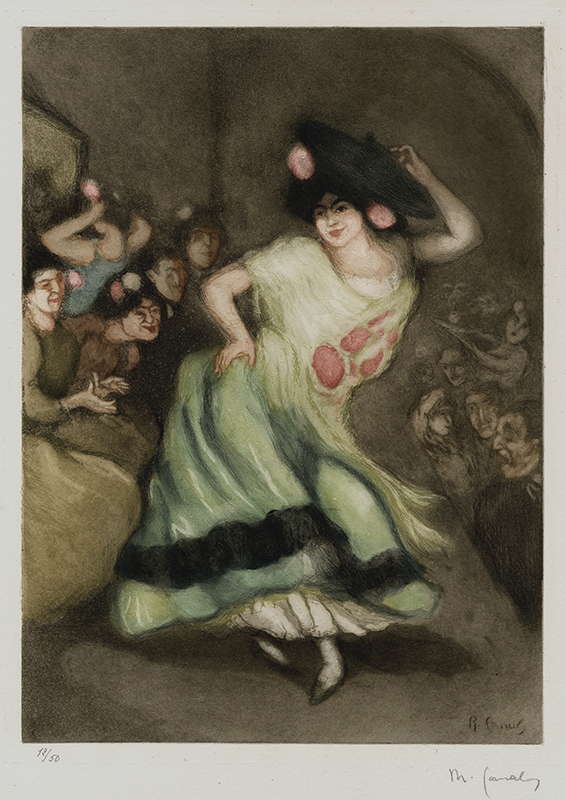
19th, 20th & 21st Century Fine Prints
707-546-7352 · fax 707-546-7924 · web: www.annexgalleries.com · email: artannex@aol.com
Baile de Flamenco (aka: Bailadora) by Ricardo Canals y Llambi

Baile de Flamenco (aka: Bailadora)
Ricardo Canals y Llambi
Baile de Flamenco (aka: Bailadora)
Spanish artist Ricardo Canals was noted for his paintings and prints of Flamenco dancers and performances. The dancer's skirt swirls as she dances on stage for an appreciative audience.
Canals and fellow Spaniard Pablo Picasso were housemates early in their careers and shared an interest in Spanish traditions, like flamenco music and dance.
The late 18th century was the period when flamenco was on total ascension. Performed at the 'cafés cantantes', it was the time when this dance was completely professionalized and taken to a whole new level. Flamenco is considered to be a mix of a few cultures, namely Andalusian, Arabic, Sephardic, Islamic, and Gypsy.
The very first flamenco cante jondo (deep song) was a passionate cry of despair of the poor and marginalized Andalusian peasants. Every performance used to carry a message, and it was conveyed through the rhythm of the flamenco guitar along with the claps of the dancer and the applause from the audience.
These elements make flamenco an extremely passionate dance form, which touches the deepest of human emotions. With the passage of time, a lot of improvisations happened, and now flamenco has more than 50 musical styles known as 'palos'. These styles are classified on the basis of their rhythmic patterns, modes, geographic origin, chord progression, and the formation of stanzas. It was the time when the variegation occurred in the types of performing flamenco. Before it was permitted legally, flamenco was like a private ritual for the gypsies, who performed the dance hidden from other people.
http://www.buzzle.com/articles/flamenco-dance-facts-about-flamenco-dancing-in-spain.
html